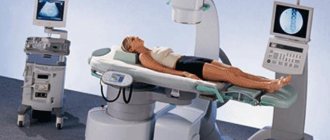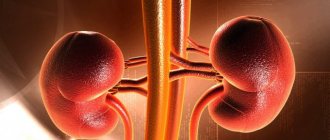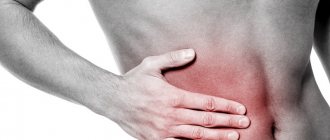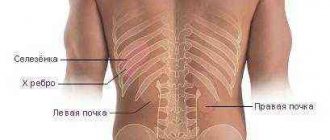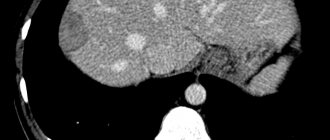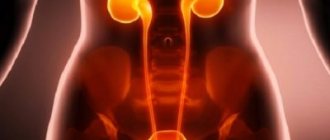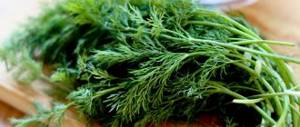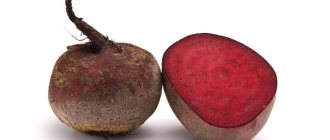Eastern teachings about maintaining health in the body teach us to understand the nature of the processes occurring in our body. In China and India, various techniques are used to influence certain parts of the body in order to influence and change the energy currents in the internal organs. According to one of the meanings, the word “mudra” is translated as “invoking joy.” In our article we will look at the topic of restoring the functions of the urinary system, or at least helping traditional methods of treatment, for example, yoga gestures (mudras). Namely, how Apaan mudra can help against kidney diseases and what other mudras exist that help restore the functioning of these organs.
General information about mudras
Mudras in the Western world mean a system of closing fingers to improve a person's health and general well-being.
Mudras in the Western world mean a system of closing fingers to improve a person's health and general well-being. Although advanced practitioners use this technique to change the flow of energies in the body to achieve certain states, an ordinary person can also use one or another mudra, knowing at the same time what effect it can have on the body.
For reference: Mudras are one of the most powerful methods of influencing oneself, proven over thousands of years, to achieve health and a state of inner peace. Mudras can be practiced anywhere.
The special closing of fingers is based on knowledge about the elements (energies) of the universe of which each person consists. Each of the fingers is responsible for its own element:
- Thumb – Fire element;
- Index finger – element Air;
- Middle finger – element Ether (space);
- Ring finger – Earth element;
- The little finger is the element of Water.
By closing the fingers in certain, sometimes complex, configurations, you can control the energy responsible for the functioning of certain internal organs and systems. If the fingers are closed, then the energy remains in the body; when opened, it is released. Mudras are performed sitting on the heels with closed knees or in the lotus position. The duration of one mudra is from 2 to 5 minutes three times a day, for more advanced practitioners from 15 to 30 minutes during one long practice with visualization, with both hands.
Several mudras are used to help with kidney diseases. The leading one is Gyan Mudra, which is performed for 10 minutes before any other mudra. Next is “Fearlessness Mudra”, “Soaring Lotus”, “Energy Mudra” (Apaan Mudra).
Attention! It is not recommended to change the sequence and ritual of performing mudras.
How the work of the organ is related to energy
According to Buddhists and Hindus, all human problems are born in psychoenergetic centers - chakras. Due to wrong thoughts, emotions and actions, the flow of vital energy in the subtle body is disrupted. If a person does not change anything, over time, these disturbances in the chakras manifest themselves at the level of the physical body and all sorts of diseases arise.
The liver is responsible for connecting the body with the outside world; it regulates the activity of internal systems. This most important organ is closely connected with Manipura - the chakra, which acts as the basis of human strength, needs, feelings and desires. The Manipura chakra, like the liver, is directed to the external world, but regulates the internal state.
Manipura chakra is associated with the liver
The energy of all chakras is fixed and concentrated at the ends of the fingers and in the palms. Manipura connects the liver and hands into a single energy system.
First of all, the organ interacts with the middle finger and palm. Therefore, in order to cure liver diseases, it is important to stabilize the energy flows in the center of Manipur, and for this it is worth using special practices.
Recommendations for daily practice
If you are just starting to practice finger yoga, remember that only regular practice produces results.
If you are just starting to practice finger yoga, remember that only regular practice produces results, it is not a method of instant relief (although there are mudras that can relieve e.g. heart attack) and treating this technique as a panacea would be a mistake. Restoring the functioning of any organs requires time and patience.
If you are a person living an ordinary social life, then gestural yoga will be a good assistant for you in complex therapy for kidney diseases. However, if you seriously engage in this practice, lead a healthy lifestyle, eat right, and adhere to positive thinking, you will most likely significantly restore your health, contrary to medical predictions.
Attention! For diseases that require urgent medical or surgical treatment, you must adhere to the recommendations of your doctor. Mudras, at the same time, will help to quickly restore strength after therapy.
For the first few days, practice only Gyan Mudra, which will start the healing process, then you can gradually introduce other hand positions that help with kidney diseases. During classes, focus on your feelings, as if observing from the inside what you feel, add visualization, imagining yourself full of strength and health. As you exhale, imagine how illness and pain leave your body, dissolving like a cloud in space. Let go of illness with ease and with gratitude for the lessons you have learned. Feel the liberation from the disease, which will become more tangible every day.
How to find a kidney recipient and who can become a donor?
How to get rid of incontinence and cystitis? Yoga therapy for women!
How to get rid of incontinence and cure bladder inflammation? Treatment of the genitourinary system and restoration of women's health is possible thanks to yoga therapy!
Problems associated with disorders of the genitourinary system are very common in women, especially after the birth of a child. The most common disorders are urinary incontinence and bladder inflammation.
Incontinence
The inability to stop the flow of urine is called incontinence, and it can be partial or complete. Complete loss of control is less common and tends to occur in very old women or those whose nervous systems are compromised.
Partial incontinence is common in women after menopause¹, but the problem can occur at any age.
How does incontinence manifest?
1. Urgent incontinence occurs when a very short time passes between the urge to urinate and the inability to continue holding urine.
2. Stress incontinence. This type of incontinence occurs when a small amount of urine is released during any strain (laughing, coughing, sneezing, etc.). Loss of urine occurs even when the bladder is almost empty.
Causes of incontinence
There may be several reasons for women's health problems:
- bladder disease;
- chronic nervous tension;
- nerve damage due to trauma,
- birth defects.
the reason is weakness of the muscles that open the bladder.
During childbirth, the pelvic muscles become stretched and weak, and can sometimes be damaged during surgery. If you do not solve this problem and do not train your muscles, they will never regain their normal tone.
How to get rid of incontinence?
Traditional medicine does not offer any treatment other than surgery.
However, it is possible to restore women's health and get rid of incontinence with the help of special yogic practices.
The most important are: Mula Bandha, Vajroli Mudra, Naukasana and Uddiyana Bandha.
Mula Bandha and Vajroli Mudra should be practiced both in simple form (quick contractions) and with breathing. Practice done twice a day for several weeks will bring remarkable results (a description of the practical program is given at the end of the article).
Cystitis or inflammation of the bladder
Cystitis is an inflammation of the bladder, not an inflammation of the urethra. The term cystitis is used to describe a range of symptoms that occur when the bladder becomes inflamed and infected.
Signs and symptoms
The main symptom of bladder inflammation is a frequent urge to urinate (every few minutes), but there is no urine or only a few drops of it.
When urine passes through the urethra, a burning sensation occurs, and a dull pain in the lower abdomen or discomfort around the urinary opening may also be felt. Sometimes, when the urine is inflamed, it has an unpleasant odor and may contain blood and pus.
Cystitis is very common among women. According to scientific data, approximately 50% of women suffer from this disease at least once in their lives. Women's predisposition to bladder inflammation is explained by the fact that the female urethra is shorter than the male urethra, which allows bacteria to easily reach the higher parts of the tract.
Due to the proximity of the anus, vagina and urethra, bacteria travel easily. They are often found on the skin between the anus and genitals, and negligence in personal or spouse hygiene can result in bacteria entering the urinary tract.
After sexual intercourse (to avoid infection), it is advisable to urinate to clean the urethra with urine.
Causes of bladder inflammation
Typically, bladder inflammation is caused by infection. Sometimes, if personal hygiene is not observed, bacteria living in the intestines enter the urethra and from there rise into the bladder.
Cystitis can also be caused by a vaginal infection or kidney infection.
Factors contributing to inflammation
Fibrous tumors and uterine prolapse can put pressure on the outside of the urinary tract, causing urine to become blocked, which sometimes occurs during pregnancy. Irritation or damage to the urethra during childbirth also predisposes to infection.
Tissue irritation can occur from excessive or rough intercourse, vaginal deodorants, and certain contraceptive creams.
Also, some birth control pills can affect the occurrence of infection and the state of women's health. Food can also cause allergic reactions in the urinary system.
Medical treatment of the genitourinary system
If cystitis occurs, it is very important to see a doctor, because chronic infections can lead to kidney decay and other serious complications.
Treatment involves taking sulfates and antibiotics; in some cases, a surgical solution to the problem (for example, eliminating prolapse) may be offered.
Once treatment is started, symptoms usually disappear within a day or two, but the full course usually lasts two weeks or longer. It is very important to complete the treatment completely.
Inflammation of the vagina and thrush can lead to the reappearance of cystitis when the vaginal infection is drawn back into the bladder. Therefore, it is important to complete treatment to prevent a new outbreak of infection.
Cystitis is often difficult to eradicate because there is the possibility of cross-infection from other systems and the risk of re-infection after drug treatment. Changes in the urethra after menopause can also trigger this disease.
How to get rid of a disorder of the genitourinary system?
Human urine is not only a sterile solution (which does not provide food for bacteria), but also an active antiseptic (it can kill infection).
Most bacteria that enter the urinary system from the outside die in urine.
However, as a result of disruption of certain processes, the composition of urine changes, which provokes the occurrence of diseases.
Yoga therapy will help get rid of diseases of the genitourinary system and restore hormonal balance.
Yoga therapy for the prevention of diseases of the genitourinary system
Prevention of urinary infection through yoga is based on a gentle diet and a balanced program of asanas, pranayamas and meditation.
Diet: important recommendations
Those suffering from cystitis are advised to eat a balanced diet with plenty of whole grains and vegetables. A vegetarian diet is preferable because it helps to avoid the excessive acidity that a meat diet gives, it cleanses the body, and preserves energy.
1. It is advisable to drink a lot of water to urinate copiously in order to flush the urinary tract with urine.
2. Avoid drinking tea, coffee, alcohol, and too spicy foods, otherwise it may cause an allergic reaction in the urinary tract.
3. If it turns out that there is little urine output despite adequate fluid intake, it is recommended to drink a glass of lemon-barley water or coconut water twice a day.
4. It is necessary to consume enough vitamin C. It helps fight infection. This vitamin is found in green vegetables and tomatoes, especially raw ones, lemons, oranges, gooseberries, grapefruit, pineapple, guava and all types of berries. However, it should be remembered that vitamin C is destroyed by prolonged boiling.
Yoga exercises for treating the genitourinary system
Daily sadhana² at a set time, like self-discipline, will fill the body with an abundance of energy and replenish the supply of vitality. You don't need to do a lot of practices, but you need to do them regularly.
Shankaprakshalana in its short form should be practiced weekly for two to three months. This practice relieves any tension in the kidneys and helps flush out the entire urinary system.
Asanas with a back bend stimulate the kidneys, and the opposite ones (with a forward bend) also massage the bladder and draw out accumulations of stagnant urine. In this regard, Surya Namaskar is an ideal combination of important asanas of all types, leading, in addition, to balance the nervous system.
Other useful asanas (yoga poses): Supta Vajrasana, Ushtrasana, Dhanurasana, Marjariasana, Bhujangasana. Matsiasana, Ushtrasana and Dhanurasana also have an effect on the thymus gland (the gland in the center of the chest). This gland plays an important role in protecting our body from infection.
Most women find that practicing asanas stimulates urination. This effect is enhanced when inverted poses such as Sarvangasana are practiced.
Pranayama (yoga breathing exercises) is also an important element of yoga therapy. It helps restore the circulation of vital energy. Sitkari and Nadi Shodhana Pranayama are the most important here.
Meditation is another integral part of yoga therapy. When you are overtired, when the mind requires rest, you should completely immerse yourself in silence.
Regular meditation practice removes all types of blocks in the system, fills you with vital energy and restores the nervous system.
Asanas:
Naukasana - 5 rounds, hold as long as possible.
Bandha mudras:
Uddiyana Bandha - 7 rounds standing or sitting.
Mula Bandha - quick contraction 100 times, rest 100 times, then practice with breathing 10 times.
Vajroli Mudra - quick contractions 100 times, rest 100 times, then practice with breathing 10 times.
You need to repeat the program in the morning and evening.
Practical program for cystitis
The following complex will help restore health and get rid of even chronic cystitis.
Pranayama:
Shitkari Pranayama - 9 rounds;
Nadi Shodhana Pranayama - 10 rounds.
Shatkarmas:
Lagu Shankhaprakshalana - once a week.
Other:
Ajapa Japa meditation.
Nava Yogini Tantra
Gyan mudra
A gesture symbolizing “Knowledge” and the processes of cognition of various levels of being.
A gesture symbolizing “Knowledge” and the processes of cognition of various levels of being. It restores energy metabolism very well, has a positive effect on life processes inside the body: metabolism, blood circulation, etc.
Place your hands on your knees, palms up, arms relaxed. Connect the pads of your thumb and index finger into a ring. A gesture is considered strengthened when the index finger rests with the nail on the second phalanx of the thumb. The remaining fingers (middle, ring and little fingers) are relaxed and straightened. This gesture is often used for meditation.
Mudra of Fearlessness
This gesture helps cleanse the body of toxins and other unwanted substances, cleanses the kidneys, and directs vital energy to the genitourinary system, thereby healing it. Gesture of moving away from obstacles.
The right arm is bent at the elbow, the elbow is pointing down. The forearm and palm are raised up, the palm is at chest level and directed forward. The left hand is lowered down, the palm is at the level of the stomach and directed upward in the shape of a “boat” (as if something is standing on it).
Exercises
Performing complexes of asanas and mudras is indicated for middle-aged men to prevent prostate diseases. Cases when yoga against prostatitis is harmful:
- previous surgery - especially if the surgery was recent;
- the presence of chronic pathologies (certain exercises are prohibited) - in each case, consultation with the attending physician and trainer is necessary;
- acute colds;
- high body temperature;
- general malaise, weakness, fatigue.
To properly prepare for therapeutic exercises, you should consult a trainer. He will select a set of useful yoga exercises after reading the urologist’s report and his recommendations. Precautionary measures:
- you should stop exercising if you experience pain in the lower abdomen;
- you need to start by performing simple positions;
- refuse asanas, the performance of which causes discomfort;
- Do not perform difficult positions at home, using advice from the Internet.
An important rule for practicing yoga for prostatitis: carefully observe personal hygiene. Be sure to shower at the end of your workout and put on fresh underwear.
To warm up the muscles
Breathing techniques are used to warm up. It goes like this:
- The stance is straight, arms extended upward. Take a deep breath, hold your breath for 3 seconds. Hands smoothly fall along the seams.
- The stance is straight, arms are lowered in a free position. Take a deep breath, raise and lower your arms in front of you.
- Inhale, hold your breath for 5 seconds, close your eyes. Use your fists to massage the surface of your thighs.
After each exercise, exhale slowly. Carry out only one of the options. These exercises help warm up the muscles and accelerate blood flow throughout the body, including the prostate area.
"Floating Lotus"
The primary element of this mudra is pure, illuminated water.
The primary element of this mudra is pure, illuminated water. A gesture of wisdom, youth and prosperity. Therefore, this hand position is very well used in the treatment of the genitourinary system (especially in women).
The lotus is a symbol of rebirth, self-improvement and enlightenment. This pure flower is a symbol of immortality and divinity, originating from the earth, passing through water on its way and opening towards the sun. The lotus pose itself (padmasana) symbolizes fire. Thus, the “Soaring Lotus” combines all these four elements.
Fingers are moved to the side. Cross the ring and little fingers inside the palms (in some sources there is a crossing over the back of the palms).
The science of psychosomatics and its connection with kidney diseases
Other mudras for kidney diseases
There are other gestures to practice that can significantly improve the functioning of not only the kidneys, but the entire body as a whole.
"Palace of Reproduction"
This gesture is the “key” to the Swahistan chakra
This gesture is the “key” to the Swahistan chakra, which is located between the navel and the pubic bone (about 4 fingers below the navel). The Palace of Reproduction gives energy to Svadhisthana and is used for chronic kidney diseases.
Immediately after waking up in the morning, you must first perform Gyan Mudra for 10 minutes. Then proceed to the "Reproduction Palace". To do this, place your right palm on your lower abdomen, with your thumb slightly to the side. Hold your left palm up in a “boat” position, placing your left hand above your right, with your thumb pointed to the side and the other fingers closed. In this case, the side surface of the left palm and the little finger touch the stomach.
"Survival"
This mudra is the “key” to the Muladhara chakra, which is located in the perineum (base of the spinal column). To improve the functioning of the genitourinary system, improve the function of the rectum, spine, and also to eliminate fear, this gesture must be used regularly.
After performing the Gyan Mudra, you can begin the “Survival” gesture. To do this, you need to place the end of the thumb at the base of the ring finger, press the index, middle, ring and little fingers with the pads of the palm, thus forming a fist.
Attention! Any practice is effective only if you do it regularly and believe in success. The most important thing in gesture yoga is to listen carefully to your feelings, visualize healing, and closing the energy channels on your fingers will help with this.
Regularly undergo preventive examinations, follow your doctor’s recommendations, and be attentive to your health. A positive attitude, regular practice and a healthy lifestyle can greatly improve your well-being. Remember, the human body is a self-healing system. Knowing how it works, you can manage your condition yourself, thereby improving the quality of your life.
Brief conclusions
The benefits of mudras for the kidneys depend on faith, correct execution and a positive attitude.
To perform the procedure correctly, you should not forget about moderate breathing. Only with complete relaxation and purification of thoughts can the desired result be achieved. Mudras are able to relieve symptoms of the disease and treat the root cause of kidney pathology, but patients should not forget that finger exercises are an auxiliary measure. In case of diseases of the excretory system, you must first consult a doctor and not self-medicate.
